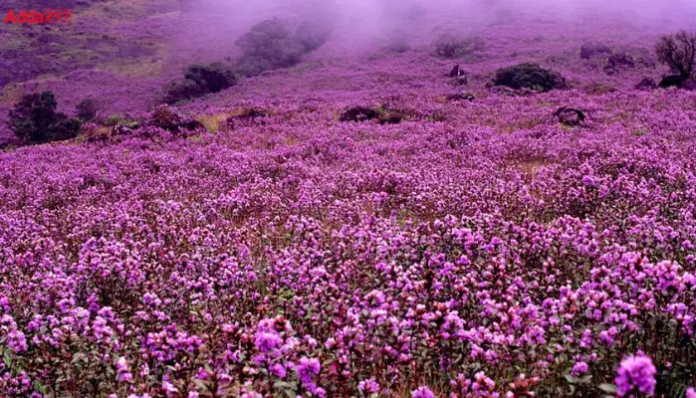
According to the Ministry of Environment, Forest and Climate Change (MoEF), Neelakurinji has been included on the list of plants protected under Schedule III of the Wildlife (Protection) Act, 1972, under the Wildlife (Protection) Act, 1972. After the Center increased the earlier protected list of six plant species to 19 species, Neelakurinji has been added to the list, and according to the order, those who uproot or destroy the plants will be fined Rs 25,000 and imprisoned for three years, and cultivation and possession of the plant are prohibited as well.
Neelakurinji is an endemic plant found in a small stretch in the Western Ghats, from the Mangaladevi hills to the Nilgiris hills and the most popular Neelakurinji is Strobilanthes kunthiana which blooms once in 12 years. However, some other rare varieties of Neelakurnji are also found in the Western Ghats region. The blooming of Neelakurinji is a major attraction for tourists, who flock to the locations where it blooms and this has also led to the destruction and uprooting of the plant, which is a major threat to the flowering areas.
There is no doubt that the new order will help to protect the plant and its habitats. Forest department officials will take action against those who uproot or destroy Neelakurinji in a forest area, protected area, or national park. It is the department’s duty to strictly follow the government order, and some environmentalists have welcomed this decision, and are calling on the Forest Department to ensure the protection of the areas where Neelakurinji flourishes.
The listing of Neelakurinji under Schedule III of the Wildlife (Protection) Act, 1972 is a significant move that will help in protecting the plant and its habitats. Furthermore, the new order will also be of assistance to those who destroy or uproot the plant, which is a major threat to the flowering areas in the area. Especially for the Kallippara hills in Idukki, where the plant is recently in bloom, it is important that the Forest Department ensures the protection of the areas where Neelakurinji blooms. By doing so, we will be able to preserve the plant for future generations and ensure that tourists will continue to enjoy the beauty of the blooming Neelakurinji for many years to come.


